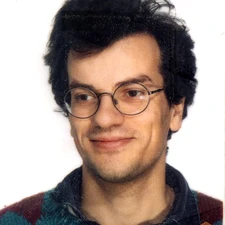Didier Paillard

The 2013 Milutin Milanković Medal is awarded to Didier Paillard to understanding the nonlinear nature of Earth system dynamics and, in particular, for his pioneering ideas on the response of Quaternary climate system dynamics and carbon cycle to Milankovic forcing.
Didier Paillard is an outstanding and pioneering expert in the study of the nonlinear response of the climate system to past climate changes, focusing specially on glacial–interglacial cycles and glacial millennial scale climatic variability. His work has addressed many of the most fundamental questions of Late Pleistocene climatic variations. He has provided a new view on the Milankovic theory by proposing a nonlinear paradigm based on thresholds to explain the Pleistocene glaciations.
Starting with conceptual models, his ideas have been further tested in more complex climate system models, leading to fundamental progress in the understanding of the role of the carbon cycle and the ice-sheets in their nonlinear response to orbital forcing. Didier Paillard has highlighted the role of ocean circulation in glacial abrupt climate changes such as Dansgaard-Oeschger events, as well as the importance of ice-sheet–ocean interactions within glacial abrupt climate changes, such as Heinrich events. He has made a significant contribution to our understanding of the pivotal role of the Antarctic ice sheet in the shift from 100 thousand years to 41 thousand year glacial cycles about a million years ago, and its crucial role in linking glacial-interglacial changes in climate and the carbon cycle, possibly providing the ‘missing link’ in our understanding of the Pleistocene glacial cycles.
Paillard has tackled the dynamics and links between virtually all parts of the climate system, from ocean circulation to ice sheet growth and decay, tools he has used to directly address the causes and consequences of glacial–interglacial cycles as well as the dynamics of the observed periodicity in Northern Hemisphere climate within the last glacial cycle.
Uniquely, his expertise and insights span the physics of climate and biogeochemistry, and he has made inroads into understanding the nature of changes in global carbon cycling and atmospheric CO2, the other great player on the glacial–interglacial stage. His use of conceptual models to investigate novel mechanisms of the dynamics of the long term climate system has been inspiring for the current and future generation of climate scientists. With his in-depth understanding of Milankovic forcing, the dynamics of the cryosphere and the carbon cycle, he has been able to simplify the problem and focus in on the key mechanisms behind the Pleistocene glacial cycles. Of the many scientists endeavouring to solve the classic ice-age problem, Didier Paillard is clearly at the forefront of the field and has contributed exceptionally as an excellent scientist and mentor.
Publication resulting from this medal
Paillard, D.: The Plio-Pleistocene climatic evolution as a consequence of orbital forcing on the carbon cycle, Clim. Past, 13, 1259–1267, https://doi.org/10.5194/cp-13-1259-2017, 2017.
